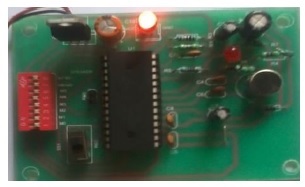Tongue Control System for Individuals with High-Level Injuries and Paralyzed
DOI:
https://doi.org/10.54741/asejar.1.3.4Keywords:
hall effect sensor, magnet, arduino, voice module, lab viewAbstract
Wheelchair control methods for people with tetraplegia and other disabilities that prevent them from using the standard joystick are critical. Users with severe spinal cord injuries will be able to control their wheelchairs with their tongue movements thanks to this project. On a system of inductive tongue control, this device is based. When a severe spinal cord injury or neuromuscular disease affects the brain and spinal cord, it is rare for the tongue to be damaged, so it is used to control the system instead of the feet and hands. Aside from that, "tongue movements are also quick, precise, and do not require much mental effort." As a tongue-operated assistive technology, the Tongue Control System (TCS) has the potential to help people with a variety of disabilities control their environment. In order to understand what the user intends, it analyses and categorises their tongue movements. With a Tongue Control system, a small permanent magnet embedded inside a nonmagnetic fixture is used to measure the magnetic field generated by the tongue, which is tracked by a series of Hall-effect magnetic sensors. In order to measure the captivating field from various angles and provide continuous real-time analogue outputs for controlling wheelchairs and electrical devices, the magnetic sensors are equestrian on a dental allowance and attached outside the teeth.
Downloads

Published
How to Cite
Issue
Section
ARK
License
Copyright (c) 2022 K. Rambabu

This work is licensed under a Creative Commons Attribution 4.0 International License.
Research Articles in 'Applied Science and Engineering Journal for Advanced Research' are Open Access articles published under the Creative Commons CC BY License Creative Commons Attribution 4.0 International License http://creativecommons.org/licenses/by/4.0/. This license allows you to share – copy and redistribute the material in any medium or format. Adapt – remix, transform, and build upon the material for any purpose, even commercially.










